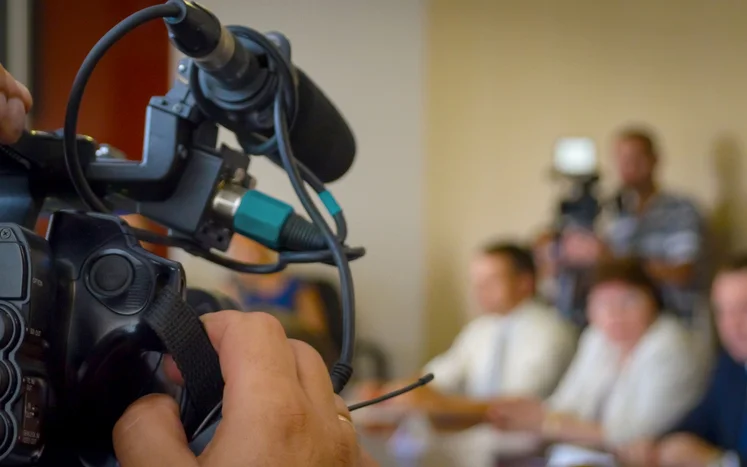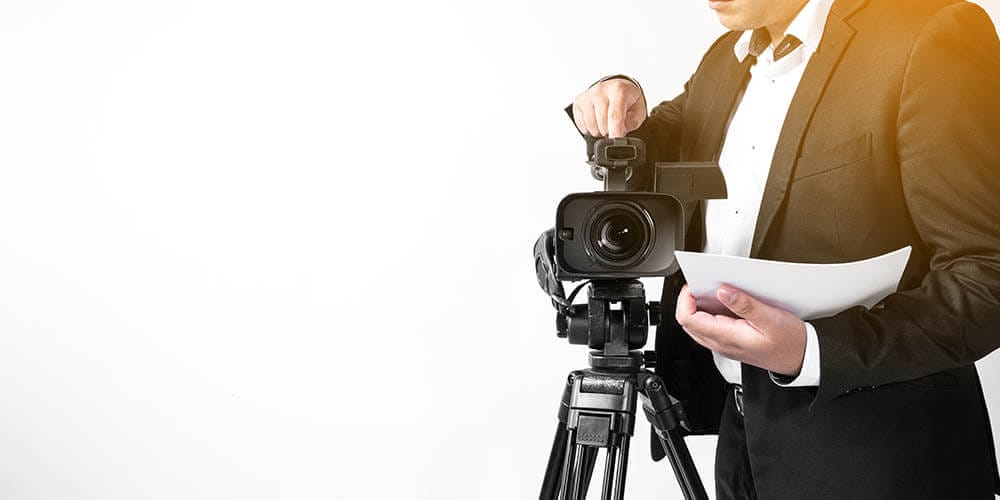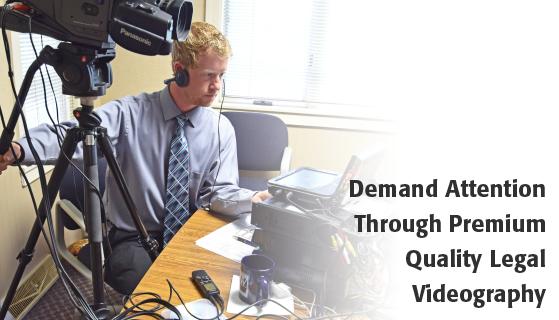Comprehending the Value of Videography in Legal Procedures
The integration of videography into lawful proceedings has actually arised as a substantial aspect in the discussion and analysis of proof. By catching aesthetic aspects such as body language and facial expressions, videography improves the narrative surrounding witness testimonies and can profoundly influence jury understandings.
Duty of Videography in Proof
Videography plays an increasingly critical function in legal proceedings, working as an effective medium for presenting proof. The integration of video clip recordings into the lawful structure permits a much more vibrant representation of realities, allowing jurors and judges to visualize occasions as they transpired. This aesthetic paperwork can encompass a variety of products, including monitoring video footage, tape-recorded witness testimonies, and professional demonstrations, all of which can dramatically enhance the evidentiary landscape.
Among the key advantages of videography is its capability to catch subtleties that may be shed in written accounts. Faces, body movement, and situational context can offer crucial understandings, aiding to convey feelings and objectives that text alone can not. The usage of video proof cultivates a more appealing court experience, possibly assisting jurors in comprehending complex situations.
As technology developments, the quality and access of videographic proof have boosted, making it an integral part of contemporary lawful methods. Courts significantly identify the value of video clip as a dependable source of information, prompting lawyers to adjust their techniques for proof presentation. Ultimately, videography offers not only to highlight realities however also to enhance the total honesty of the judicial process.

Enhancing Integrity and Quality
A significant benefit of including videography in legal process is its capability to improve both reputation and quality of evidence presented in court. Videographic proof can capture subtleties that created files may neglect, such as tone, body language, and context. This graph permits courts and juries to much better understand the conditions bordering the situation, consequently promoting a much more precise understanding of the occasions in inquiry.

Additionally, the clearness paid for by videography minimizes the possibility of misinterpretation that can occur from textual descriptions. This precision is especially critical in complex situations, where information can be quickly misconstrued. Inevitably, by offering proof in an aesthetically obtainable format, videography not only enhances the stability of the judicial process however likewise supports enlightened decision-making by those involved in lawful process.
Effect On Court Assumption
The incorporation of videographic proof considerably influences court understanding, often causing much more engaged and notified considerations. Jurors are usually more responsive to aesthetic information, which can boost their understanding of complicated cases. Videography presents realities in a way that is both easily accessible and compelling, enabling jurors to connect with the proof on a much more personal degree.
Moreover, the capacity to witness occasions as they happened can evoke emotional responses that written transcripts or spoken testimonies may fall short to generate. This psychological interaction can lead jurors to form more powerful opinions pertaining to the credibility of witnesses and the total narrative of the case. The aesthetic depiction of evidence additionally assists in clearing up obscurities, making it simpler for jurors to realize the context and relevance of the info presented.
Moreover, videography can function as a powerful device for storytelling, making it possible for lawyers to create a convincing story that resonates with the court. When jurors can imagine circumstances and witness crucial minutes, their capability to calculated thoughtfully and get to an educated decision is dramatically enhanced, ultimately affecting the outcome of legal procedures.
Best Practices for Legal Videography
Applying best methods in lawful videography is vital for guaranteeing that aesthetic evidence is both credible and reliable in the court room. Pick certified professionals who specialize in legal videography to guarantee the technical high quality of the recordings. This includes making use of high-resolution electronic see it here cameras and specialist site here sound tools to record clear visuals and sound.
Second, keep appropriate paperwork throughout the recording process. This includes creating a comprehensive log that includes timestamps, descriptions of the content, and the identifications of all people existing. Such paperwork can reinforce the credibility of the video.

Additionally, consider making use of ideal editing techniques. While it is crucial to maintain the initial content, minor adjustments for quality-- such as enhancing audio degrees-- can improve the general discussion without changing the compound.
Future Trends in Legal Videography
As legal videography continues to progress, arising techniques and modern technologies are shaping the future landscape of aesthetic proof in the check courtroom (Legal Videography). One significant fad is the integration of high-def and 4K video high quality, enhancing the clarity and detail of tape-recorded statements and evidence. This enhanced resolution help jurors in adequately examining the reputation of witnesses and the subtleties of the here and now products
In addition, using man-made knowledge (AI) in video analysis is acquiring grip. AI tools can assist in recognizing crucial moments in footage, generating transcripts, and even evaluating non-verbal interaction, which supplies deeper insights right into witness credibility. Additionally, online reality (VR) and augmented fact (AR) are poised to revolutionize how proof is presented, allowing jurors to submerse themselves in criminal offense scenes or scenarios, thereby cultivating a much more profound understanding of the context.
Verdict
In summary, videography acts as an essential tool in legal proceedings, boosting the discussion of evidence and enriching the general understanding of instances. By catching non-verbal cues and boosting the reliability of witness accounts, videography dramatically influences court assumption and decision-making processes - Legal Videography. Following best methods makes sure the performance of legal videography, while emerging trends guarantee to more augment its role in the judicial system, eventually fostering a much more educated and involved lawful environment
Videography plays an increasingly important role in lawful proceedings, offering as a powerful tool for offering evidence.A significant benefit of incorporating videography in legal procedures is its capability to boost both reliability and quality of proof offered in court. Inevitably, by offering proof in a visually obtainable style, videography not just enhances the honesty of the judicial procedure yet likewise supports informed decision-making by those involved in legal process.
In recap, videography serves as a crucial tool in legal procedures, improving the presentation of proof and enhancing the overall understanding of cases. Legal Videography. Adhering to best techniques makes certain the performance of legal videography, while emerging patterns promise to more enhance its role in the judicial system, ultimately fostering an extra informed and engaged legal setting